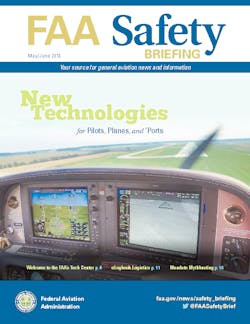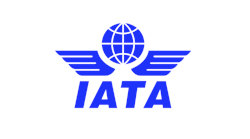Readers of AMT and other FAA colleagues occasionally inquire about how I stay current on trends and news related to aviation maintenance and other aviation safety matters. I always take such questions as a compliment because I try hard to keep my “finger on the pulse” of current aviation maintenance news. This article offers a few categories and specifics of my “sources” most of which are readily available to you. The word “transparency” applies here. There are no secrets when it comes to safety.
Select the Source!
You must be careful of information overload. Readers must decide what is most important for them. Borrowing a term I learned from a former FAA Associate Administrator, Nick Sabatini, “… if everything is important then nothing is important.” That means you must set a priority on where to obtain consistent, timely, and reliable information. Look for sources matched to your industry segment. For example, if you work in an MRO, look for the MRO info from organizations like the Aeronautical Repair Station Association (arsa.org) or the Aircraft Electronics Association (aea.net), and other industry groups. If you are a GA person you might watch Aircraft Owners and Pilots Association (aopa.org) or the National Business Aircraft Association (nbaa.org).
You can get a mix of large and small aviation operations by signing up for the print and digital media at Aviation Pros (aviationpros.com) and receive daily information from AMT Magazine. Again, be selective about your sources. Then, read them daily, weekly, or monthly.
The Internet is our Information Friend?
It’s all there. Just open a browser and go. The last time I searched “aviation maintenance” I had 13 million hits on Goggle. “Human factors” gave 21.6 million hits. Obviously, you must be selective regarding information from the web. Not only is the web comprehensive, it is also low cost. Low cost usually means that you must do a lot of the work to find the precise information that you want and need.
When maintenance and human factors is a primary concern then I recommend the FAA website (humanfactorsinfo.com). That URL takes you to the FAA maintenance human factors website, which has a 20+ year legacy of FAA and other maintenance human factors documents.
Humanfactorsinfo.com is only one example of an FAA website. The public FAA homepage is faa.gov. That site provides you with most of the same information that FAAers use. It also has a means for you to enroll in an email system to keep you abreast of a variety of government and commercial aviation safety news.
The Curt Lewis & Associates website (curt-lewis.com) is a comprehensive information source. The site permits you to sign up for the daily aviation safety email push. The system uses something called a “crawler” that reads and combines news from around the web. The Curt Lewis emails provide access to newspapers, magazines, websites, and other sources of aviation safety information. It is a “must-have” information source.
SKYbrary (Skybrary.aero) is an international site that has the goal of being “a single point of reference for aviation safety knowledge.” It also has an email push for you to receive immediate information targeted to your interests.
When one makes lists, as provided in this article, it is impossible to cover everything. There are many free databases that permit you to “mine” for the information specific to your interests and requirements. Many are easy to navigate including, but not limited to: the National Transportation Safety Board (ntsb.gov); the NASA Aviation Safety Reporting System (asrs.arc.nasa.gov); or the Bureau of Transportation Statistics (rita.dot.gov/bts/home).
Excellent Industry Print Sources
I appreciate the low and no-cost magazines targeted to industry personnel, including you. Of course, AMT Magazine is one of those. Its advertisers want you to have the information so everyone wins when you subscribe. Other sample trade magazines on my list include Airport Business, Ground Support Worldwide, Civil Aviation Training Magazine, and other great industry publications. I like these magazines because they are very up-to-date. The publication time is extremely fast, meaning that you are usually reading articles that were written in the past 30 days. These magazines are targeted to the specific industry segment and usually offer very applied advice. These are not usually “theory” magazines written by and for Ph.D.s (not counting me).
In addition to maintenance and human factors I am always interested in training. The Civil Aviation Training Magazine, by Halldale Publishing, keeps me abreast about training for all aspects of aviation. I must admit that my feline-loving spouse was particularly proud when I wrote articles for CAT Magazine.
More Print and Media Sources (Credit Card Required)
My position demands that I have as much current information as possible. For that reason I personally subscribe to print and media sources like Aviation Week and Space Technology (AviatonWeek.com/awst). I have read AvWeek, without interruption, for over 35 years. The Aviation Week site offers a subscription only Aviation Week Intelligence Network and also Aviation Daily. FAA is a corporate subscriber to many of these services. Aviation Week has a print and media product dedicated to MRO, named Inside MRO (aviationweek.com/inside-mro).
Another excellent paid source is Flight International (flightglobal.com). This magazine, as you would expect, has a broad international range of topics and a variety of additional print and digital information products.
Generally speaking, the paid subscription magazines have less advertising than the free ones. Their ads are geared to buyers of airliners, engines, or avionics. I like the advertisements, for large as well as small products and services. It shows me how MROs differentiate themselves or how air framer and powerplant manufacturers compare their new products.
If you want to avoid all advertising then try government publications. For example, the FAA publishes a very nice glossy color magazine. The FAA Safety Briefing is available from the U.S. Government Bookstore (bookstore.gpo.gov/products/sku/869-084-00000-0). It can be downloaded (free) from the FAA website (www.faa.gov/news/safety_briefing). I like the magazine because it always has a timely and relevant message from a key FAA executive, usually the Director of the Flight Standards Service. It is an applied magazine with news and advice to pilots as well as aircraft maintenance technicians.
Information from Industry Groups and Professional Societies
Industry trade associations and professional societies can keep you updated on safety. The magazines and websites, like the Aeronautical Repair Station Association (ARSA) or the Aircraft Electronics Association (AEA) are excellent. Such memberships are generally aimed at your employers but individuals can join at reduced rates. They also provide information, like the Avionics News from AEA, that can be downloaded to non-members. I belong to groups like Flight Safety Foundation (flightsafety.org); the Human Factors and Ergonomics Society (HFES.org), the Royal Aeronautical Society (aerosociety.com), the International Society of Air Safety Investigators (ISASI.org), and the Aircraft Owners and Pilot’s Association. The combination of information from these organizations helps ensure that I know what’s going on in safety.
And Follow the Procedures from the Manufacturers and Your Company
It would be remiss not to mention the No. 1 cause of events/incident. That is: “Failure to Follow Procedures.” I have never seen an accident report that said the operator or maintainer did not look at enough websites or read enough professional aviation magazines. To ensure continuing safety and efficiency use the manuals, work cards, and checklists. Be sure the information is current. As far as you being current, Dr. Bill suggests that you borrow some of his sources.
Other Information Sources – Be Careful
Again, you must consider your information source. You should understand the culture and context before you follow the advice. One pilot told me that his mother (or father) told him that when he went to work that he should be careful and not “fly too fast or too high.” That may be good advice but too slow and too low is another problem. A human factors presenter told me that his “Broadway” uncle told him to “break a leg” at his next speech. He jumped off the stage and end up with a fracture. Be sure that you understand the colloquialisms!





